SNAS491B February 2010 – February 2018 LM48580
PRODUCTION DATA.
- 1 Features
- 2 Applications
- 3 Description
- 4 Revision History
- 5 Pin Configuration and Functions
- 6 Specifications
- 7 Parameter Measurement Information
- 8 Detailed Description
- 9 Application and Implementation
- 10Power Supply Recommendations
- 11Layout
- 12Device and Documentation Support
- 13Mechanical, Packaging, and Orderable Information
Package Options
Mechanical Data (Package|Pins)
- YZR|12
Thermal pad, mechanical data (Package|Pins)
Orderable Information
6.6 Typical Performance Characteristics
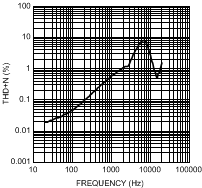
| VDD = 3.6 V | VOUT = 9 VP-P | RL = 6 μF + 10 Ω |
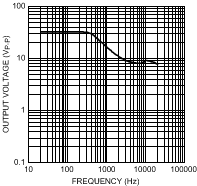
| VDD = 3.6 V | THD+N = 5% | RL = 6 μF + 10 Ω |
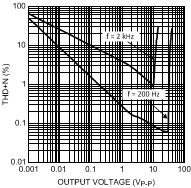
| VDD = 3.6 V | RL = 6 μF + 10 Ω |
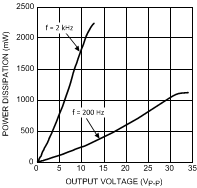
| VDD = 3.6 V | RL = 6 μF + 10 Ω |
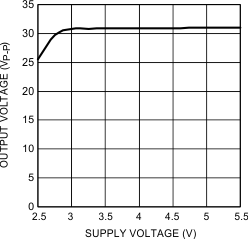
| RL = 6 μF + 10 Ω, | f = 200 Hz | |
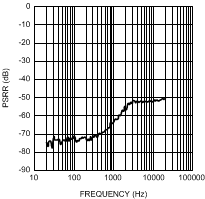
| VDD = 3.6 V | VCM = 1 VP-P | RL = 6 μF + 10 Ω |
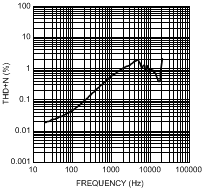
| VDD = 4.2 V | VOUT = 10 VP-P | RL = 6 μF + 10 Ω |
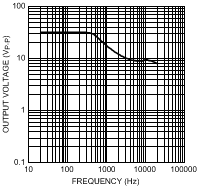
| VDD = 4.2 V | THD+N = 5% | RL = 6 μF + 10 Ω |
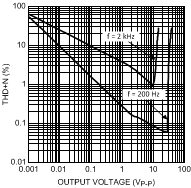
| VDD = 4.2 V | RL = 6 μF + 10 Ω |
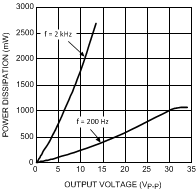
| VDD = 4.2 V | RL = 6 μF + 10 Ω |

A.
Figure 10. PSRR vs Frequency| VDD = 3.6 V | f = 200 Hz | RL = 6 μF + 10 Ω, |
| VRIPPLE = 200 mVP-P | ||